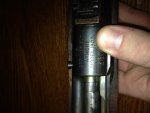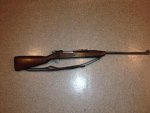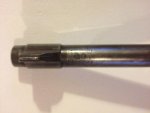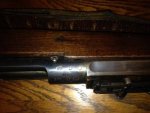I love Springfield's. At that price I would have bought it (a guess without seeing the pictures), but I wouldn't shoot it. People shoot low numbered rifles all time, but people drive without seat belts all the time too, doesn't make it safe.
When you work with metal, you have to determine how hard or elastic you want it. You heat the metal to its critical temp., then quench it (normally in oil, sometimes water). Depending on the carbon content this makes the metal hard yet brittle. Depending on what you want to do with that metal, you decide how you want to draw the temper out, making it hard but somewhat elastic, so it gives without shattering.
Look at it as a plate glass window. Glass is hard but brittle. You can toss a marble at it and it may or may not break. You may toss several marbles and it wont break, of the first marble may break it. The thing is, you never know which marble, if any, will break the glass. The same is true for the early Springfield/Rock Island 1903s.
As a CMP GSM MI, I would follow the CMP rules and not let anyone shoot a low numbered rifle in any of the matches I put on.
But I would buy one. I'd would restore it the best I can, add a bayonet and use it as a wall display.
I don't know about the Winchester ammo you are talking about but I doubt any manufacture is going to make ammo advertised for a low numbered Springfield or Rock Island. Their lawyers would throw a fit.
I don't understand why anyone would make special ammo for the high number or double heat treated Springfields. They don't need it, they can take the pressure of any normal '06 ammo.
"Special" (for lack of a better term), is made by several companies for the Garand, not that the Garand cant take the pressure, but its where the pressure is applied that affects the Garand. The gas system of the Garand is designed for medium powder (4895-4064, etc) and bullet weights of < 180 gr. In fact 4895 was designed for the Garand.
But that's do to the gas system that the Springfields/M1917s don't have so that would come into play. The can take ammo with slow powders and heavier bullets without problems.






